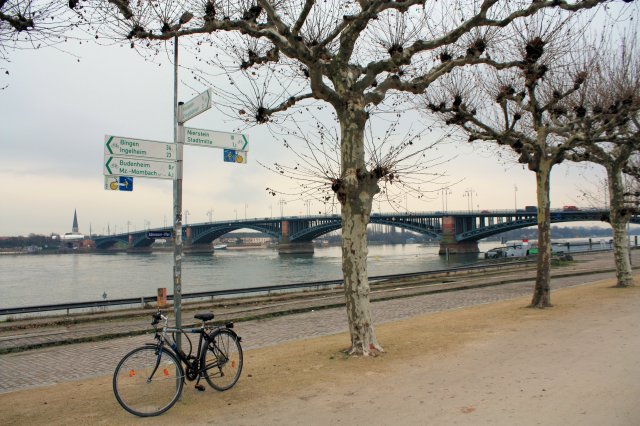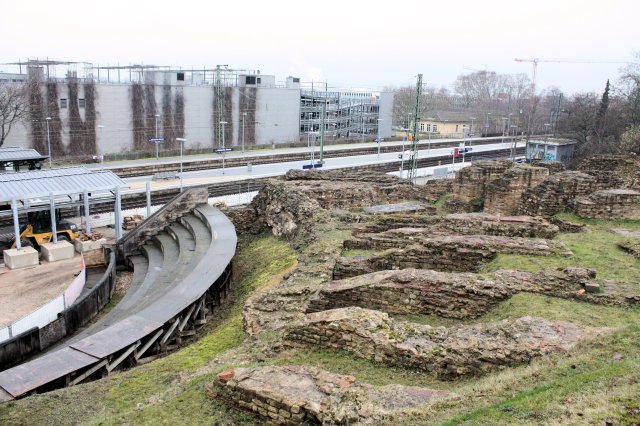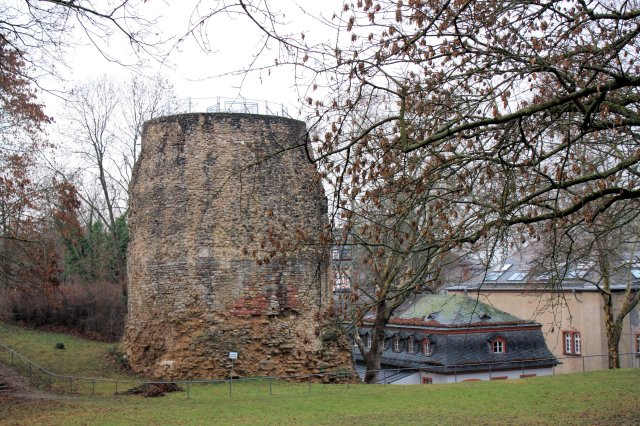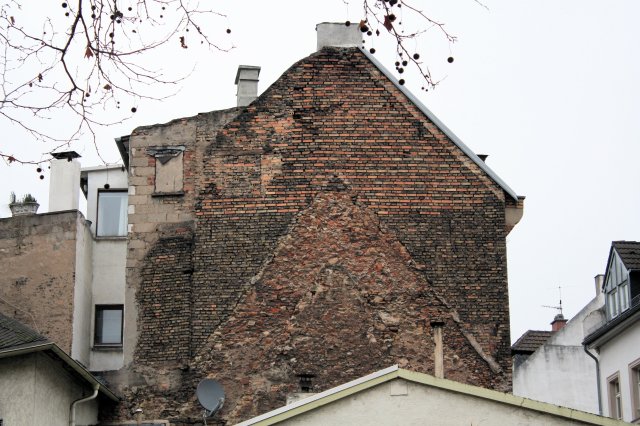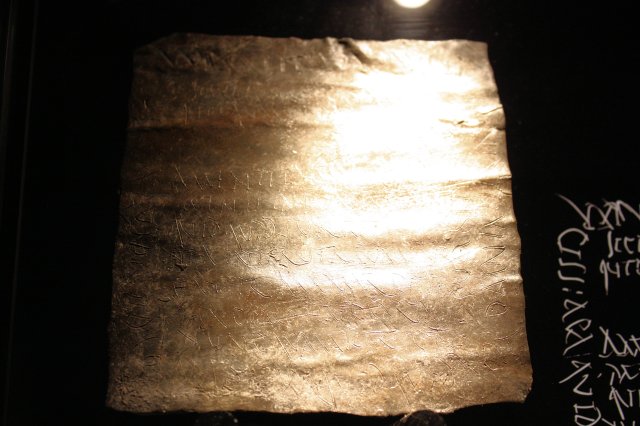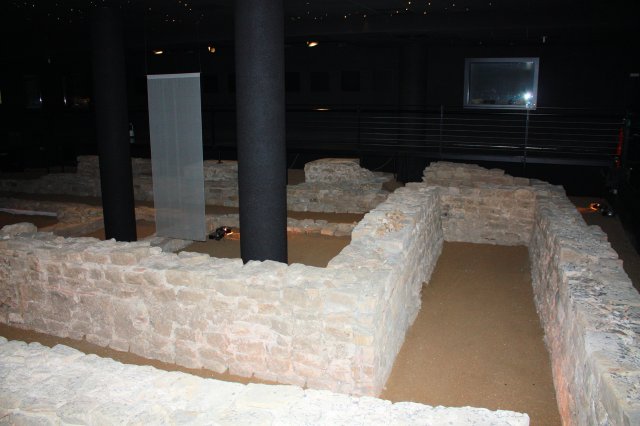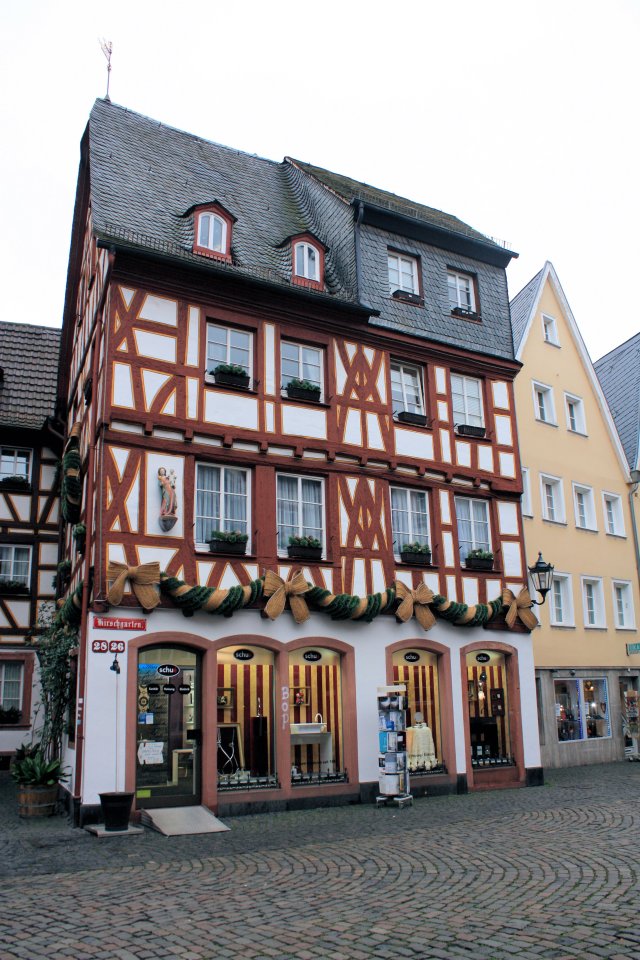I want to tell you about Mainz, Germany. Not just Mainz, but the secret Roman history of Mainz. Like most cities I’ve traveled to in Europe, Mainz has many well-hidden secrets. Although Mainz has a lot to offer for a day-trip, I wouldn’t consider it a touristy area. Most people go to see the Cathedral or the first Gutenberg Bible at the Gutenberg Museum. I have seen those things in 2008, when I first visited Mainz for a few hours. This time I spent the entire day exploring the city and found a few things that I missed the last time. This trip I found lead curse scrolls in the underground Sanctuary of Isis and Mater Magna, a house with four roofs, a Roman theater bisected by the railway, and a monument to a long-dead Roman General.
Mainz was a significant Roman fort-city, but little remains of its Roman past. It is there though, if you look for it. Back in the day Mainz was known as Roman Mogontiacum. The city officially dates back to12 BCE (before the Common Era), but the Romans were in Mainz as early as 57 BCE. Eventually Mainz became the capital of the province Germania Superior. The name Mogontiacum means “the land of Mogon.” This name has been identified with Apollo Grannus, a god of health. So today when you hear the name Mainz, think about the Greek/Roman deity Apollo and know that you are wandering in his city. According to the information found on www.livius.org, Mainz was already a significant settlement at the beginning of the Common Era. Archaeological evidence as well as written sources indicates that there was a fort, two villages, a smaller fort, a river port and a pontoon bridge, none of which remain today.
The first stop in Roman Mainz is the Roman Theater, more than half of which is missing. It was destroyed when the railway was built in the early 1900’s. Unfortunately, that half of the theater was completely lost and no archaeological excavations were conducted. I’ve never seen anything like this before, a railway cutting a clean line through an archaeological site, one half completely destroyed, and one half preserved. It is clear that archaeology was not a priority in turn of the twentieth century Germany. This theater is, or was one of the largest Roman theaters north of the Alps. It once held over ten-thousand spectators! Imagine that, ten-thousand! It’s hard to imagine because so little is left, but it’s still possible to stand there and look through the fence and imagine what it was like to hear the roar of a crowd that large. The Roman Theater at Mainz is easy to see, and its free, just get off at the stop Mainz Römisches Theater, turn around it will be waiting for you. Right now it’s completely fenced in, but worth a look. I hope in the future it will become an archaeological park open to the public.
Before you go walk down into the city of Mainz, just walk up the hill from the Mainz Römisches Theater stop to the Citadel and you will see the Drususstein, an empty tomb dedicated to General Nero Claudius Drusus, the legal stepson of the Emperor Augustus, brother of the Emperor Tiberius, father of the Emperor Claudius, paternal grandfather of the Emperor Caligula, and maternal great-grandfather of the Emperor Nero. He married the famous Marc Antony’s daughter Antonia, who would one day be poisoned or forced to commit suicide by her grandson Caligula. To say the man was well connected to Imperial Rome would be an understatement. The monument, now only a third of its original size, was built around 9 BCE. and was once entirely encased in white marble. Drusus is said to have founded the city of Mogontiacum, and may have been destined to become emperor himself one day, but he died on a campaign in 9 BCE. In the HBO series “Rome,” during the scene where the young Augustus meets and decides to marry Livia Drusilla, she is already pregnant with Drusus at the time. I haven’t been able to find out exactly how he died (some say he fell from his horse) but perhaps life mirrored fiction as in the movie “Gladiator”, perhaps Drusus was too great a man, and too great a general to be allowed to live. He commanded such a following that cult formed around him after his death, and the Drususstein was erected soon after.
On a side note, on the way back down from the citadel into town, be sure and look for the house with four roofs. It’s not Roman, and I don’t know how old this house is but you can see centuries of construction still visible in one roofline. I would certainly like to find more about this structure and if it is related to the time period of the oldest house in Mainz, which was built in 1450.
One of the coolest things I have seen in all of Germany, I stumbled upon by accident. Downtown Mainz has lots of shopping. One of those shopping areas is the Römerpassage. It looks like any other indoor mall found in Germany, but when you get to the end, there is a glass door that leads to a set of stairs that takes you underground. There is an entire world underground at the Römerpassage. The mall above was extremely busy, but the underground museum was completely empty. The name of this underground area is the Sanctuary of Isis and Mater Magna (great Mother). Even though they don’t normally give tours, I was very fortunate to receive a special tour from the English speaking geologist who excavated the sanctuary.

The inscription states: For the welfare of the emperor and of the Roman senate and the people and the army Claudia Icmas, freedwoman of the emperor, and Vitulus, slave of the prince, under the priest Claudius Atticus, also a freedman, have had this inscription set down for Mater Magna.
I could go on for pages about the significance and history of Mater Magna, but I will keep it brief. The sanctuary was built in the second half of the 1st century of the Common Era (known as AD or CE), and dedicated to the Egyptian Goddess of Isis and the Great Mother. The site was discovered in 1999 and excavated from 1999-2001. The exhibition opened just in 2003. When you descend down into the sanctuary you are greeted by a surreal landscape of ruins, walls, and artifacts, all purposefully dimly lit for ambience and effect. Isis is of course from Egypt, and Mater Magna was commonly worshipped in Phrygia in Asia Minor. Very little of the original temple complex remains, but it is fortunate that anything was preserved at all. Little is known about these “mystery cults” throughout the Roman Empire, and even less is known about the location of these cults. One question remains; since Mainz was such an important Roman city, where are the remains of the temples to the state Gods of Jupiter, Juno, and Minerva? Have the sites been completely destroyed, or are they still waiting to be discovered?

The scroll states: For Prima Aemilia, the lover of Narcissus, it should be so: everything that she will try, everything that she will do, everything should go down badly for her. her sense should be removed, she should pursue her affairs without sense. Everything that arises should turn out the opposite. For Prima, the lover of Narcissus, it should be so: as this letter shall never bloom, she should also never bloom.
Some of the coolest artifacts in the entire sanctuary are the lead curse scrolls. Roman curse scrolls are extremely rare. They don’t always have curses written upon them and are sometimes found wedged into the foundations of houses and other structures.
I think about the person that felt compelled to write this scroll. Was it a jealous man or woman? Who knows. However her letter did “bloom” (open) almost two-thousand years later. Whoever wrote it certainly couldn’t have imagined that we would be reading their secret curse almost two-thousand years later. More can be read about these scrolls on theDiscovery News website.There’s a lot more to Roman Mainz, the remains of an aquaduct on the grounds of the university, ruins of a city gate, and probably hundreds more undiscovered and unexcavated sites. If you only see one thing in Mainz, then see the Sanctuary of Isis and Mater Magna. These mystery cults were spread throughout the Roman Empire, but little remains of them today. The excavation and preservation of the complex under a shopping area in Mainz has preserved a part of the past for future generations that would have otherwise been lost to history forever.
More Information:
Originally published on Jaunting Jen, republished with permission.
